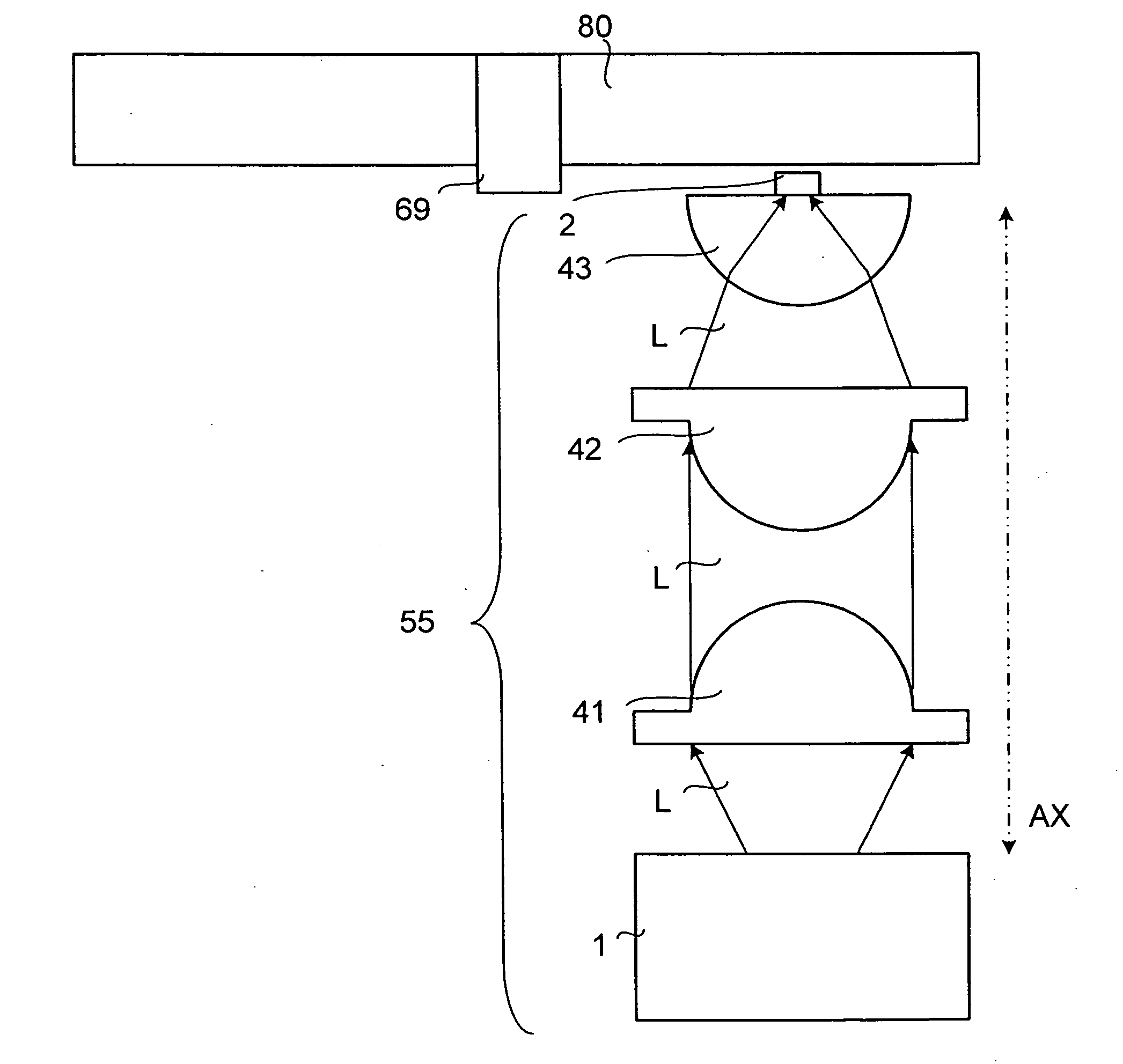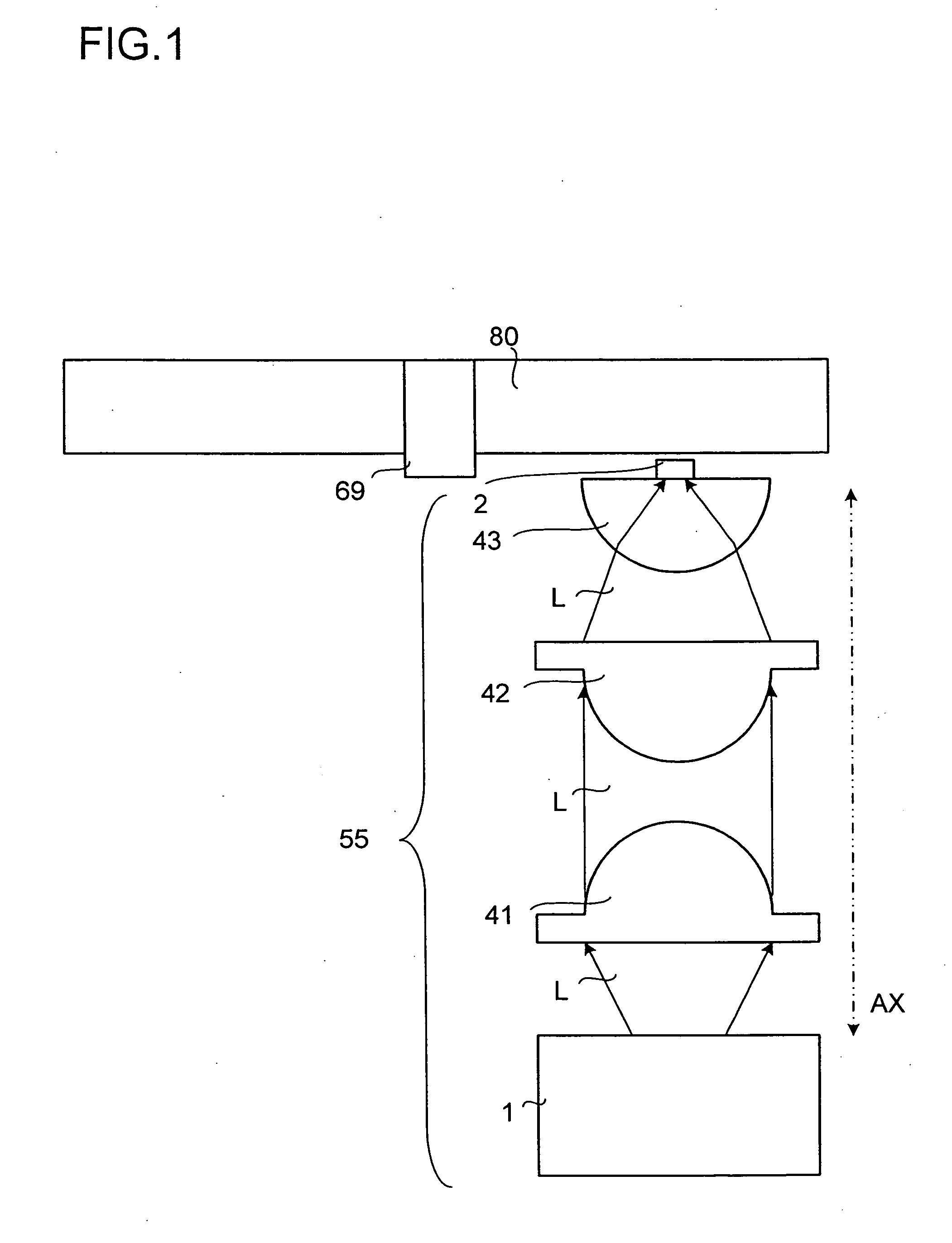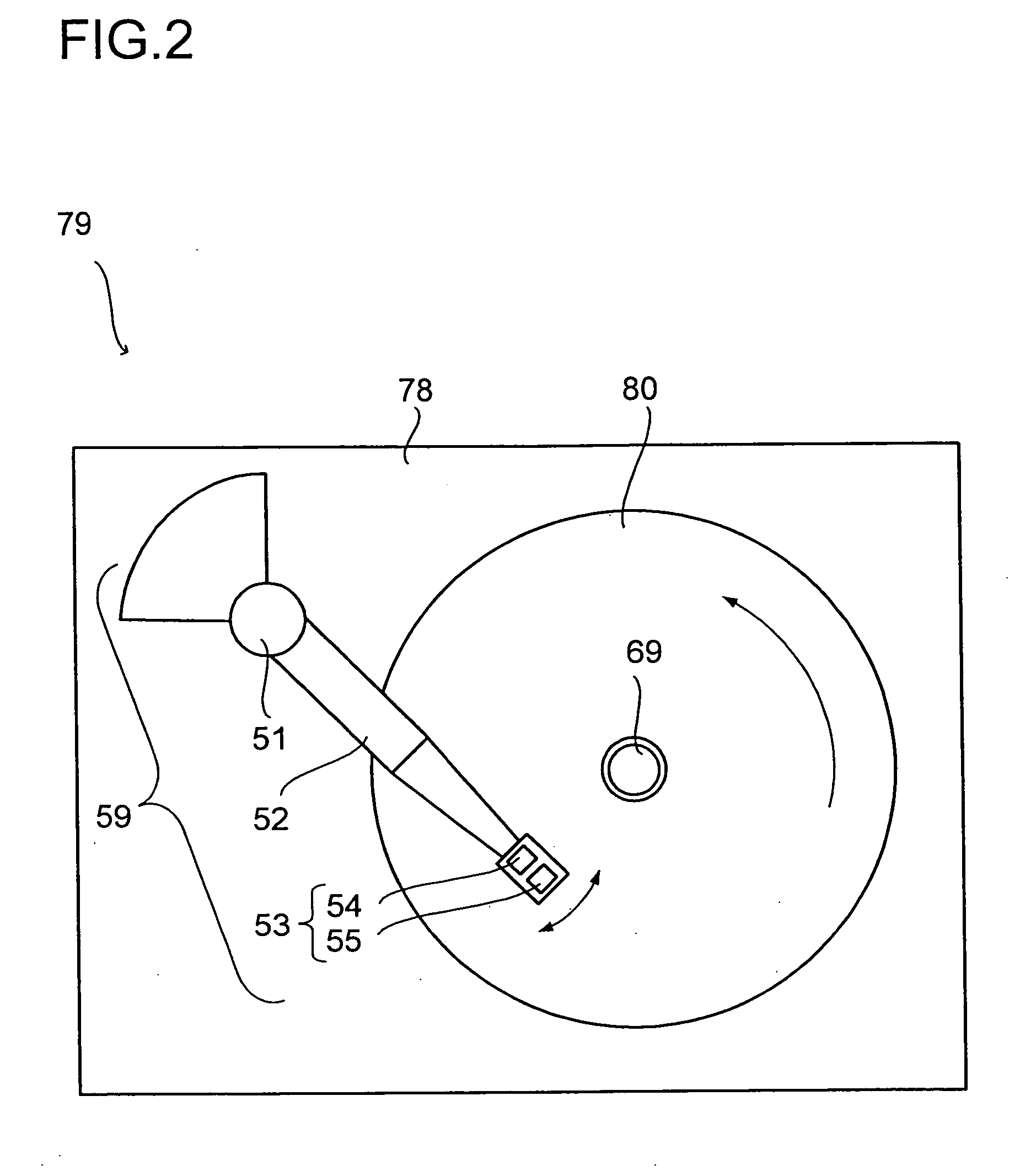Light-condensing head and storage apparatus
a technology which is applied in the field of light-condensing head and storage apparatus, can solve the problems of insufficient light intensity (the magnitude of electric field vectors) of the near-field light produced, and the inability to produce near-field light with augmented light intensity
- Summary
- Abstract
- Description
- Claims
- Application Information
AI Technical Summary
Benefits of technology
Problems solved by technology
Method used
Image
Examples
embodiment 1
[0122] An embodiment of the present invention will be described below with reference to the drawings. It should be noted that, in the following description, radially polarized waves are indicated as “R” some times but not at other times, in which latter case it is to be understood that reference to another drawing is requested.
1. Construction of a Storage Apparatus
[0123]FIG. 2 is a diagram schematically showing the construction of a HDD 79 adopting heat-assisted magnetic recording, as an example of a storage apparatus. As shown in the figure, the HDD 79 includes, housed inside a housing 78: a spindle motor 69 that holds and rotates a magnetic recording medium (disk) 80; and an actuator assembly 59.
[0124] The actuator assembly 59 has an actuator arm 52 that is rotatable on a pivot (rotary shaft) 51. At the non-pivoted end of the actuator arm 52, a head unit 53 is fitted.
[0125] The head unit 53 includes: a magnetic head 54 that writes and reads magnetic information to and from th...
embodiment 2
[0281] A second embodiment of the present invention will be described below. Such members as are used or find their counterparts in the first embodiment will be identified with common reference numerals and symbols, and no explanations thereof will be repeated.
[0282] In the first embodiment, the light source unit 1 includes a half-wave plate 4 to make light contain more radially polarized waves R. The present invention, however, is not limited to such a design. For example, the light source unit 1 may instead include a polarization rotator (a scheme that employs a polarization rotator is called Scheme 4).
[0283] Scheme 4
[0284] A polarization rotator rotates the direction of the electric field vectors of light (its polarization direction). FIGS. 37A and 37B show how a polarization rotator 5 changes an electric field vector. The symbol “&” denotes that light with electric field vectors as indicated by an arrow with a hollow inside is passed through a polarization rotator 5 with a ro...
embodiment 3
[0290] A third embodiment of the present invention will be described below. Such members as are used or find their counterparts in the first and second embodiments will be identified with common reference numerals and symbols, and no explanations thereof will be repeated.
[0291] In the first and second embodiments, the light emitted from the 2-D PCL 3 is passed trough a half-wave plate 4 or through a polarization rotator 5 so as to contain more radially polarized waves R. The present invention, however, is not limited to such a design. For example, the light emitted from the 2-D PCL 3 may itself contain radially polarized waves R.
[0292] Specifically, the TM oscillation mode of the 2-D PCL 3 is exploited. Normally, a semiconductor laser has TE oscillation mode (TE mode) and TM oscillation mode (TM mode). Accordingly, as shown in FIG. 40, the 2-D PCL 3 has TE oscillation mode, in which it produces an electric field E parallel to and a magnetic field H perpendicular to the layer surfa...
PUM
| Property | Measurement | Unit |
|---|---|---|
| azimuth angle | aaaaa | aaaaa |
| diameters | aaaaa | aaaaa |
| wavelength | aaaaa | aaaaa |
Abstract
Description
Claims
Application Information
 Login to View More
Login to View More - R&D
- Intellectual Property
- Life Sciences
- Materials
- Tech Scout
- Unparalleled Data Quality
- Higher Quality Content
- 60% Fewer Hallucinations
Browse by: Latest US Patents, China's latest patents, Technical Efficacy Thesaurus, Application Domain, Technology Topic, Popular Technical Reports.
© 2025 PatSnap. All rights reserved.Legal|Privacy policy|Modern Slavery Act Transparency Statement|Sitemap|About US| Contact US: help@patsnap.com



